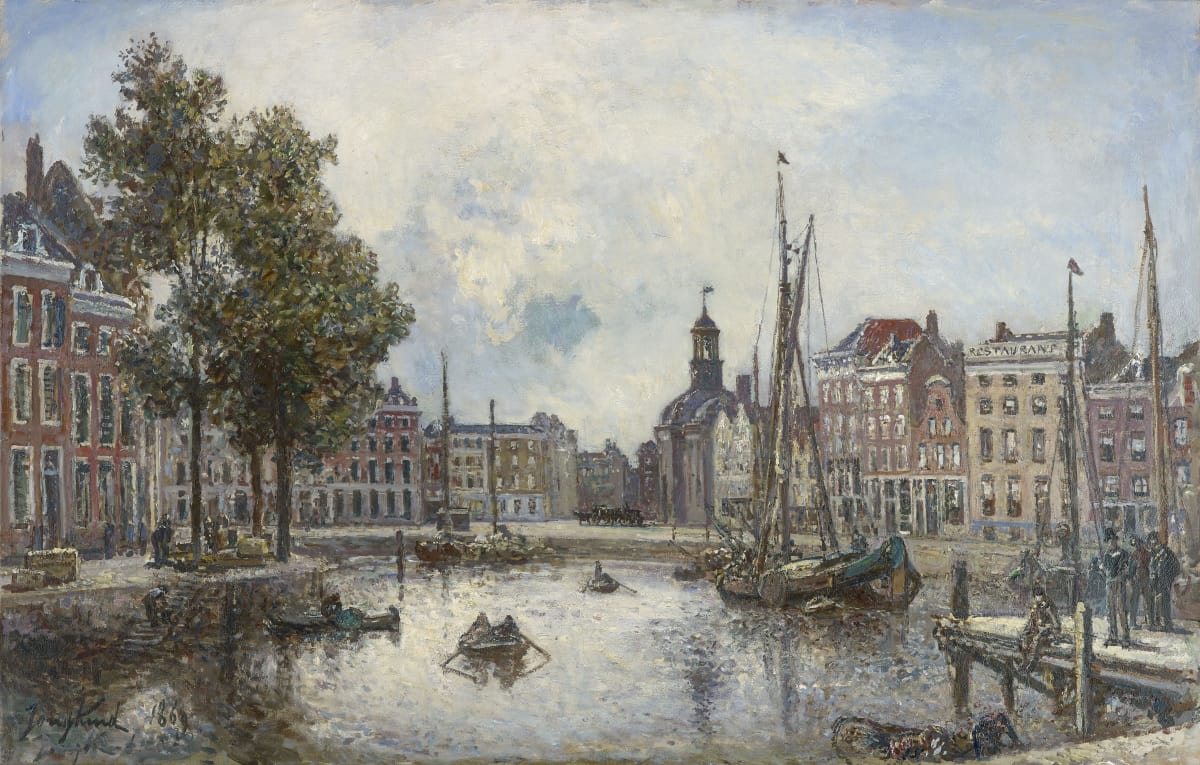Jean François Millet French, 1814-1875
Jean-François Millet was a French painter and one of the founders of the Barbizon school in rural France. He is noted for scenes which ponder the relationship between agricultural peasant laborers and the landscape they farmed, such as The Gleaners (1857). Millet’s artwork is associated with the nineteenth-century style ‘naturalism’, though also can be attributed to ‘realism’. As an important inspiration for later artists, particularly Vincent Van Gogh (1853-1890), Millet’s work was essential in the development of Impressionism.
Millet was the first child of Jean-Louis-Nicolas and Aimee-Henriette-Adelaide Henry Millet, members of the peasant community in the village of Gruchy, in Greville-Hague (Normandy). Growing up in a devout family environment, Millet later claimed, ‘It is the treating of the commonplace with the feeling of the sublime that gives to art its true power’. Thus we see how Millet simultaneously captured the dignity, pathos and poverty of French rural life, such as in The Angelus (1857), rendering all within the soft, golden light of the gloaming.
Having studied from 1833 with Paul Dumouchel and Lucien-Theophile Langlois in Cherbourg, a stipend provided by Langlois and others enabled Millet to move to Paris in 1837. Here, he studied at the Ecole des Beaux-Arts with Paul Delaroche. In 1839 his scholarship was terminated, and his first submission to the Salon was rejected.
Fleeing Paris in 1849, Millet joined the painters Théodore Rousseau (1812-1867) and Narcisse Virgilo Díaz de la Peña (1807-1876) in the small village of Barbizon. By 1865, the paintings he had produced – depicting the small, local farms and their occupants – earned him the Legion of Honor. This period, marked by Millet’s departure of Paris and honorary recognition, was one in which the artist strayed from his pervious idealised, pastoral subjects, towards a more socially realistic and personal approach.
In order to capture these poignant moments of rural life, Millet worked from paper, preliminarily joting ideas down, studying and rehearsing figures or compositions for his larger paintings. Here, working from constructive memory and imagination, he formed a highly intimate mode of expression, distinguishing him from other landscape painters.
Millet’s works are included in numerous global collections, such as, National Museum, Stockholm; Metropolitan Museum of Art, New York; Museum of Fine Arts, Boston; Musée d’Orsay, Paris.


